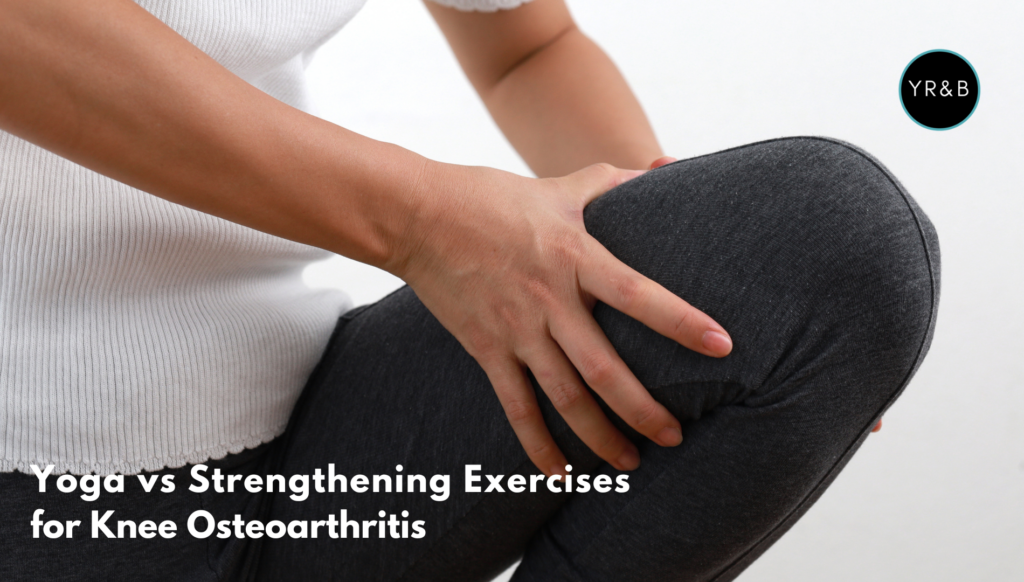What’s This Research About?
This study compares yoga and strengthening exercises to determine which is more effective at reducing knee pain in people with knee osteoarthritis (OA).
Osteoarthritis is a common joint disease affecting over 595 million people worldwide, including millions in the U.S. and Australia. Knee OA causes pain, limits movement, and reduces quality of life. Exercise therapy is recommended as a first-line treatment, with both aerobic and strengthening exercises known to help. However, little research has compared different types of exercise, such as yoga versus strengthening, and the effectiveness of mind-body approaches like yoga remains unclear.
A 2019 systematic review suggested yoga may improve pain, function, and stiffness in people with knee OA but highlighted that existing studies were generally low quality and at risk of bias. To date, no studies had directly compared yoga with a proven strengthening exercise program for knee OA.
The researchers hypothesized that yoga would be more effective than strengthening exercises for reducing pain and improving function and quality of life, given yoga’s emphasis on mindfulness, flexibility, and holistic well-being—factors linked to pain reduction. They also aimed to show that even if yoga was not superior, demonstrating it as noninferior would support its use as a patient-centered alternative that might improve adherence and outcomes.
The primary outcome of the study was whether yoga reduced knee pain more effectively than strengthening exercises after 12 weeks. The secondary outcomes assessed broader impacts on:
- Knee stiffness and function (WOMAC scores)
- Quality of life
- Depression
- Walking speed and muscle strength
Secondary outcomes were included because knee OA affects more than just pain—it also impacts daily activities, mental health, and overall well-being. Measuring these provided a more complete picture of how each intervention influenced patients over time.

TITLE: Yoga or Strengthening Exercise for Knee Osteoarthritis
PUBLICATION: JAMA Network Open | Rheumatology
DATE: April 2025
AUTHORS: Abafita BJ, Singh A, Aitken D, et al.
Osteoarthritis: A condition where the cartilage between joints wears down over time. Without enough cushioning, the bones rub against each other, causing pain, swelling, stiffness, and trouble moving the joint. It’s most common in places like the knees, hips, hands, and spine, and it usually happens as people get older or after injuries.
Parallel-arm: Two or more groups are treated at the same time, but with different treatments. Example: One group does yoga, the other group does strengthening exercises. Both groups are followed separately.
Active-controlled: Instead of using a placebo (like a sugar pill or no exercise), the comparison group gets a real, active treatment. Example: Instead of comparing yoga to “doing nothing,” they compared yoga to real strengthening exercises.
Superiority trial: The goal was to see if one treatment works better than the other — not just “as good as,” but superior.
Randomized clinical trial: Participants are randomly assigned to groups, so personal bias (like fitness level or preference) doesn’t influence which group they are in.

